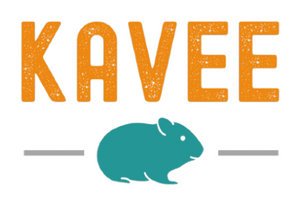When it comes to guinea pig feet care, piggy parents want to put their best foot forward. Our little friends are prone to guinea pig bumblefoot - a condition that sounds cute, but really isn’t - and other issues related to red feet in guinea pigs. Staying on top of piggy foot care is a great feet, and our blog is the ultimate guide to guinea pig feet. Become a toe-tal guinea pig feet expert by learning about guinea pig red feet, finding out what bumblefoot looks like in guinea pigs, and recognizing normal, healthy guinea pig feet!
1. What is bumblefoot in a guinea pig?

A guinea pig’s bumblefoot is an infection of the pig’s paw pad. Bumblefoot in guinea pigs is, unfortunately, a common problem in pet piggies. It’s also extremely uncomfortable for the guinea pig, especially when the small furries spend most of the day on their feet.
If you suspect you’ve spotted guinea pig bumblefoot, don’t hesitate to visit your vet!
2. What does bumblefoot look like in a guinea pig?

Your piggies’ feet may be pink or dark and look like they’re made of playdough (don’t you agree?!) when they’re healthy. If you notice that one of your little sole mates has red feet, scabs and sores on their paw pads, or swollen feet and toes, you’ve probably just spotted guinea pig bumblefoot.
On top of inflamed and red guinea pig feet, you may notice your pig limping, not using their feet properly, and a lack of appetite because of the pain. Guinea pigs’ bumblefoot is very sore for our little friends, so treating them straight away is important.
3. How do guinea pigs get bumblefoot?

Most of the time, guinea pigs’ bumblefoot comes from an unsuitable cage environment. Guinea pigs should never stay in a wire-bottom cage because their soft paw pads get injured and, soon after, infected. Soft, dry, and clean bedding is key for happy piggy feet. Wire-bottom cages are a big no-no for piggies and are one of the biggest contributors to guinea pig bumblefoot.
The other issue is a lack of cleanliness. Many piggy parents are surprised by how much mess these small pets can make, and don’t realise that a wheek-y clean cage is essential for their pets’ wellbeing. If a guinea pig sits in soiled and damp bedding, their cage becomes a breeding ground for guinea pigs’ bumblefoot. Regular cleaning is key, and our absorbent fleece liners with these pee pads make soggy cage bottoms a thing of the past.
An overweight pig, lack of vitamin C, and overgrown nails can also make guinea pig bumblefoot more likely. By providing a great diet, a large cage with enough room for exercise, and regular nail clipping, you’re helping your guinea pigs stay happy and healthy.
Not feeling too confident about guinea pig nail trims? Take a look at this fantastic guide!
4. What are the stages of guinea pig bumblefoot?

In most cases, guinea pig bumblefoot is more obvious on the front feet than the back. The infection usually feetures and progresses like this:
- Red feet
- Red and swollen feet
- Red, swollen feet with sores and scabs
- Red, swollen feet with abscesses, scabs, and injury of the tendons
- Red, swollen feet with abscesses, scabs, and injury of the tendons and bone
The earlier piggy parents spot guinea pig bumblefoot, the better. It’s easier to treat early on, before the infection spreads beyond the paw pads.
5. How do you treat guinea pig bumblefoot?

When it comes to bumblefoot, there’s only one right action: taking your pet to see a pawdiatrician, commonly known as a vet. Most vets treat guinea pigs’ bumblefoot with antibiotics and painkillers to fight the infection and make your piggy more com-foot-able. They’ll make sure the pig’s nails are trimmed properly, and the cage is clean and safe for their patient.
If the bumblefoot in guinea pigs is more advanced, the vet may suggest a special ointment and bandages that need to be changed every day. For extreme cases, the vet can prescribe daily flushing of the wound and stronger medication. As a last resort, they may suggest amputation.
Guinea pig bumblefoot is a serious condition that can lead to many health problems and long-term treatment, so staying on top of piggy foot care and the cage cleaning routine is a great way to prevent it. For more tips, check out this video from Kavee Rescue pig-expert Tara:
6. Is bumblefoot in guinea pigs dangerous?

Yes, guinea pigs’ bumblefoot is a serious and dangerous condition for your little friends. Even mild cases cause severe pain, and the longer it is left untreated, the worse the consequences can be. In extreme cases, the pig’s toe or foot may have to be amputated.
Piggy parents who know what to look out for can save time and treatment costs by recognizing the signs of bumblefoot and acting quickly. Start on the right foot by making nail clipping and a feel of their feet part of your weekly wellbeing check!

Conclusion
Those who thought bumblefoot sounds cute now stand corrected. Even though guinea pig bumblefoot is a common issue, it shouldn’t be treated casually. The condition is very painful and can lead to wider health issues in guinea pigs. A visit at your trusted pawdiatrician - or vet - is the right step for any piggy parents worried about their guinea pigs’ feet.
A suitable cage and a great cleaning routine can help you nail guinea pig feet care!









